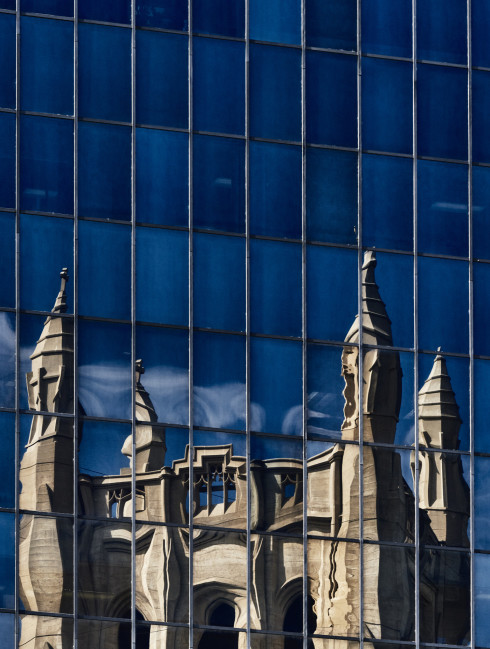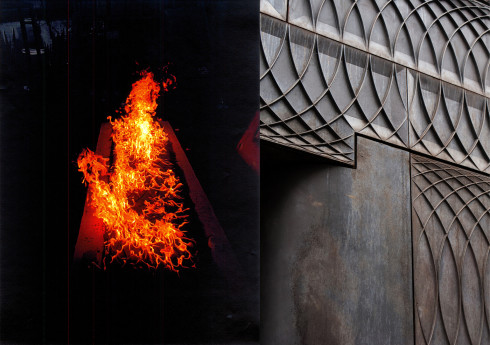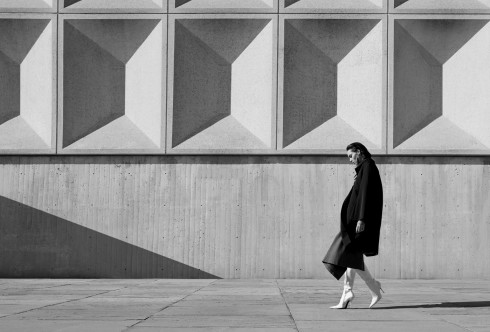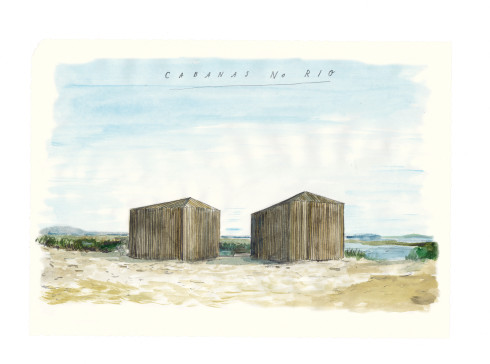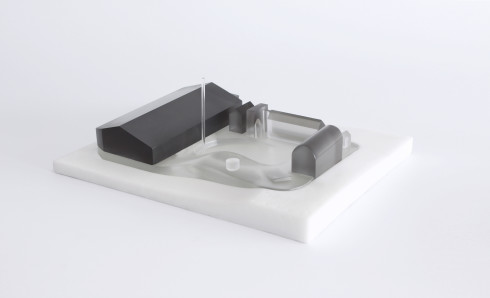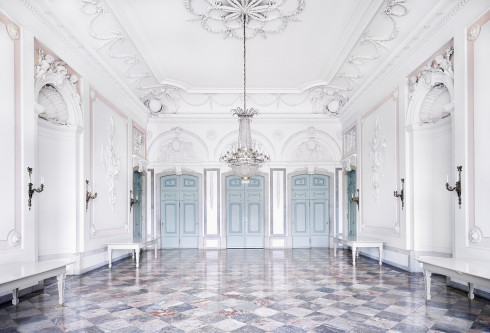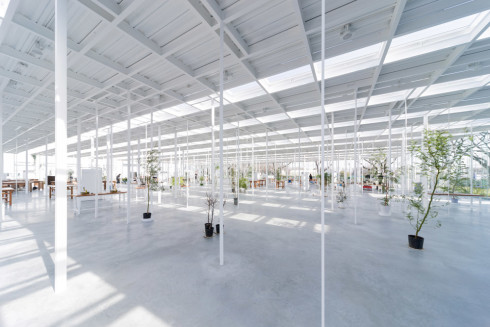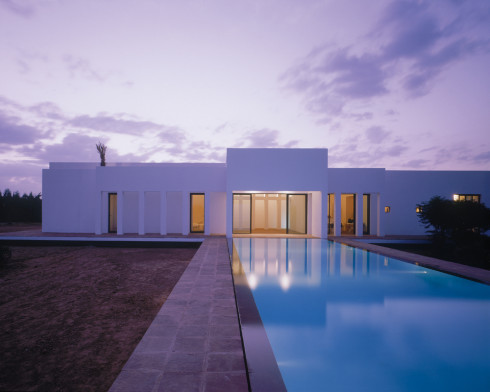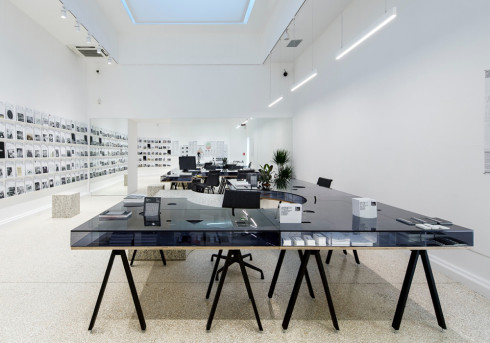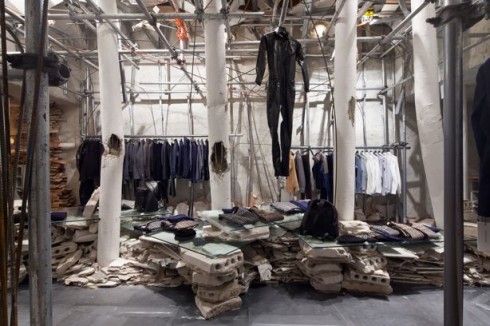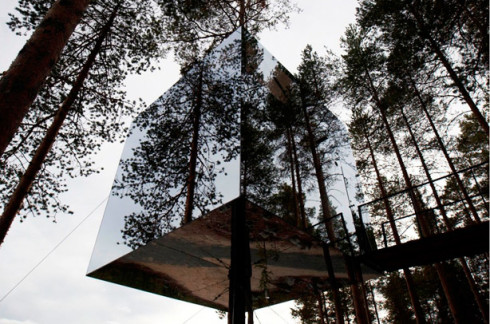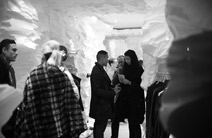
- By
- Brady Donnelly
- Sketches by
- David Adjaye
DAVID ADJAYE'S MUSEUM OF AFRICAN AMERICAN HISTORY AND CULTURE OPENS
In 2016, the Tanzanian-born architect David Adjaye will unveil the National Museum of African American History and Culture, both completing and transforming the National Mall in Washington, DC. A heavy-hitter despite a remarkably brief career—he’s not yet fifty years old—Adjaye’s design will sidestep both triteness and forgiveness and instead emphasize narration, focusing on the history of the African-American experience in a way that hides neither the darkness of the past nor the light at the end of the tunnel. It’s the sort of complexity Adjaye has mastered: a constructive, postmodern narrative, not a diatribe.
“The building very much takes its cues from that incredible history. But it’s also a space for discovery. It is a building that allows the American people to discover their history in a very direct way,” Adjaye says. “Architecture in itself is not an act of politics, but it can form—or make physical or real—the ideas that we have for society and politics.” Characteristically, Adjaye will use contrasts—in this case, compression against sweeping openness—to express a history that began with enslavement and moved, slowly, towards freedom. The foundational motif, he says, was a Yoruba sculpture, and, as such, he has designed a two-tiered, crown-like structure that culminates in an atrium open to the sky, riddled with sunlight. Surrounding this core will be a series of ornaments that simultaneously propel and restrain: a condensed lobby that seemingly exerts pressure downward, ominous clusters of thick columns descending from the ceiling, wide windows of stretched bronze mesh, spiraling stairwells that function inversely to those in Frank Lloyd Wright’s Guggenheim, funneling crowds inward as opposed to out along the walls. “Seeing American history through the lens of the African-American community is really going to surprise people,” he says. “The NMAAHC is a dream commission.”
As the son of a diplomat, Adjaye’s upbringing was one of variety, with stints across Africa, the Middle East, and the United Kingdom that left him with a unique grasp of complex spatial organization, employed heavily in the design for the NMAAHC. His understanding of how architecture can dissolve boundaries has empowered his understanding of history, rather than subdue it. “I am of West African heritage and yet was born in East Africa—so already there is a dual cultural influence. Also, Nairobi was extremely cosmopolitan—a real melting pot of different cultures with its exciting skyline and urban energy,” Adjaye explains. “Very early on, I came into contact with different ways of living in space and a highly eclectic spatial appreciation.” His work, in turn, slips deftly between public and private, lower and upper, past and present, depending upon the client and the physical surroundings. As a result, it borders on apolitical, a mere expression of existing conditions that, in turn, reshapes them. “The tension between private and public is a natural condition of the city. I think urban environments could be seen to bring into focus this relationship—by taking each quality to a more exaggerated level,” he says. “Whether public or private, however, all of my buildings engage with the urban fabric and the urban condition in the widest sense. There is always a broader responsibility, no matter how personal a project becomes.”

“My father very consciously wanted to be a diplomat so that his family could travel and see the world—the modern world. The relationship between public and private early on was therefore less critical than that between modern and ancient,” Adjaye explains. “As a child, you move seamlessly through all of this, and it wasn’t until I came to London that I appreciated how privileged I had been to be able to sample so many spatial conditions.” This realization coincided, fittingly, with his education, and he earned a Bachelor of Architecture at London South Bank University and, in 1993, a master’s degree from the Royal College of Art, where he was awarded the Royal Institute of British Architects Bronze Medal—a precursor to his receiving an Order of the British Empire in 2007. His firm, Adjaye Associates, opened in 2000, and it has since earned an enviable series of institutional commissions—the Nobel Peace Center in Oslo, the Skolkovo Moscow School of Management, and the Museum of Contemporary Art Denver, among others—despite a brief internal restructuring as a result of the recent economic downturn.
Perhaps as a result of his settling down, London has become heavily adorned with Adjaye’s work, first with homes—for Ewan McGregor and the late Alexander McQueen, for starters—and, more recently, public projects, like his heavily-celebrated Idea Stores. Built in the diverse London neighborhoods of Poplar and Whitechapel, the stores are symbols of his talents. Physically porous, lined with colored glass that imitates the awning of public markets, they incite the movement and mixture of surrounding cultures by conjoining standard library fare with yoga centers, meeting rooms, cafés, and performing-arts studios. “When I’m designing a market building, I’m thinking about how people relate to each other and what that means in the society that we live in,” Adjaye explains. “Any ideas about access and personal freedoms are embedded in the building.” The residence of art collector Adam Lindemann, located on New York’s Upper East Side, commits to this ideal in its invisibility: set back from the street, save the glimpse of a freefloating library, it exists only for those who pass through its gates, which unveil the marriage of a five-story home and a private gallery. An urban enclave, it’s built to meet requirements the opposite of those of a public center—as a home whose purpose lies solely in its use for a collector and his wife, and its commitment to the urban fabric in that it abides by historic district rules that say new construction must be out of sight.
Where Frank Gehry assembles, as in the case of his heavily-celebrated Guggenheim Museum in Spain, a radical update to surrounding culture—in port-side Bilbao, he combined contoured glass, titanium, and limestone to resemble a modernist ship—Adjaye seeks to address the underlying circumstances, historical or environmental. As such, the Idea Stores are composed of windows instead of walls, while the NMAAHC is a structure designed to both incite and inhibit movement. Ultimately, if President Barack Obama succeeds in his reelection campaign, he will be just around the corner in the White House at its unveiling—a particularly climactic point in the story recounted by the structure itself. The project, then, will speak for the public, underscoring Adjaye’s prime philosophy. “Our ideas about a civilized world,” he says, “are manifested through the architecture we make.”
The National Museum of African American History and Culture is now open at 200 15th Street NW, Washington.
Originally published in the Spring 2012 issue.
- By
- Brady Donnelly
- Sketches by
- David Adjaye

